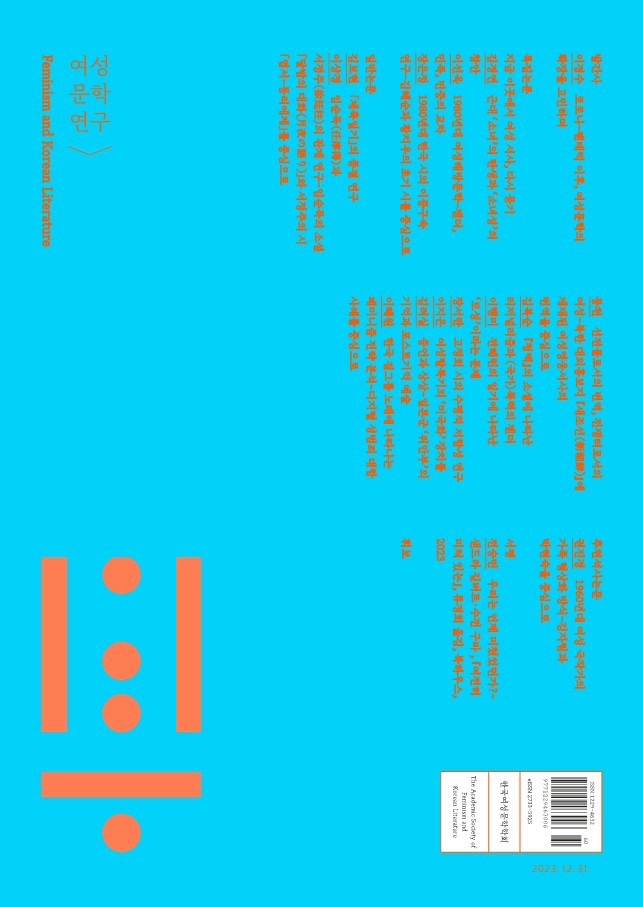- KOREAN
- P-ISSN1229-4632
- E-ISSN2733-5925
- KCI
 ISSN : 1229-4632
ISSN : 1229-4632
Article Contents
- 2024 (No.61)
- 2023 (No.58)
- 2022 (No.55)
- 2021 (No.52)
- 2020 (No.49)
- 2019 (No.46)
- 2018 (No.43)
- 2017 (No.40)
- 2016 (No.37)
- 2015 (No.34)
- 2014 (No.31)
- 2013 (No.29)
- 2012 (No.27)
- 2011 (No.25)
- 2010 (Vol.23)
- 2009 (Vol.21)
- 2008 (Vol.19)
- 2007 (No.17)
- 2006 (No.15)
- 2005 (No.13)
- 2004 (No.11)
- 2003 (No.9)
- 2002 (No.7)
- 2001 (No.5)
- 2000 (No.3)
- 1999 (No.1)
From "Motherhood" to "Mothering"-The Study of Park, Wan-Seo
Abstract
This thesis is trying to clarify why Wan-Seo Park's novel is rewriting about "mother" and what the new-found meaning of "mother" is by rewriting it. Park, Wan-Seo is writing about the same subject-war and the death of her elder brother in three different novels. The three different novels are the Namok, Uhm-ma ui Malttook series, Geu Mahntun Shinga neun nooga dah mugutseulkka and Geu Sahn e jungmal guhghi itsut sulka series. The characteristics of these novels are that the author's autobiographical aspects of war and her brother's death is shown by weaving through fiction and non-fiction. If her maiden work Namok shows the most fictitious aspects, Geu Mahntun Shinganeun nooga dah mugutseulkka comes close to non-fiction showing a lot of personal experiences. In this process the most change comes in the author's view of her elder brother's death. In Namok she emphasizes that the death of her brother is the death of a immaculate youth. At the same time the mother is shown as a patriarchal mother who incarcerates herself with the death of her son. The daughter shows the disillusionment that she has against her mother who tries to remain as just the mother of the son and not the daughter. But denying the history of her mother the author realizes that it also represents herself denying her own history. The brother's soul is already falling apart in a gruesome way due to the fear of dying in Geu Sahn e~. The mother is also sharing the fear of death with her brother and feels contempt with trying to live another day. She is described as a conspirator and is far from the sturdy Maternal God of earth that protects her son. This is when the mother is becoming a part of history again. These changes are seen in the novel as the change from memories of color to the change of taste and everyday living.
- keywords
- Downloaded
- Viewed
- 0KCI Citations
- 0WOS Citations
